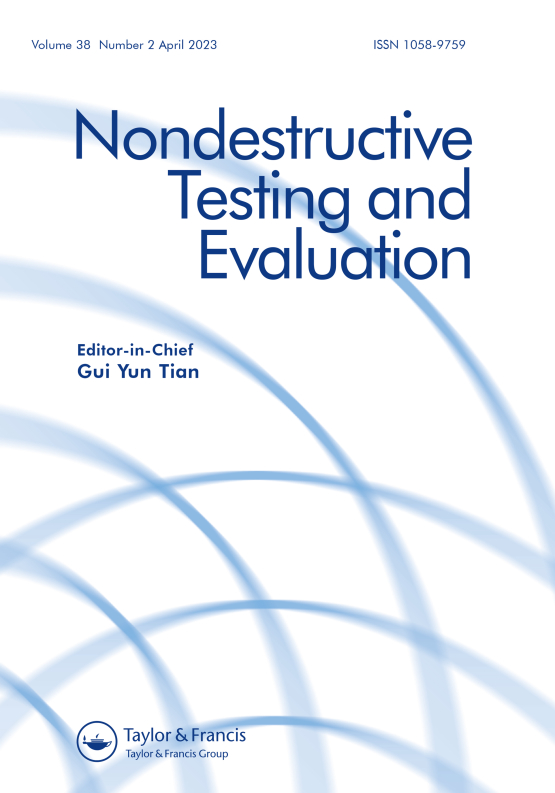Submit a Manuscript to the Journal
Nondestructive Testing and Evaluation
For a Special Issue on
AI-Driven Defect Recognition in Additive Manufacturing for Processing Monitoring and Control
Manuscript deadline

Special Issue Editor(s)
Andrea Vallati,
Sapienza University of Rome, Italy
andrea.vallati@ieee.org
Marco Ricci,
The University of Calabria, Italy
AI-Driven Defect Recognition in Additive Manufacturing for Processing Monitoring and Control
Additive Manufacturing (AM) has revolutionized the design and fabrication of complex geometries, enabling unprecedented customization across industries such as aerospace, biomedical, automotive, and defense. Despite its transformative potential, AM still faces significant challenges in quality assurance and defect management due to complex thermal histories, material inhomogeneities, and layer-wise fabrication dynamics. In 2025, industry 5.0 AI-driven defect recognition will emerge as a foundational pillar in creating human-centric, resilient, and sustainable manufacturing ecosystems. Industry 5.0 emphasizes the synergy between humans and machines, where AI augments human decision-making and enhances process adaptability. In this context, AI-powered defect detection systems are not only instrumental in achieving real-time monitoring, prediction, and control of AM processes but also in supporting human operators through intuitive interfaces, explainable outputs, and collaborative intelligence. Advanced machine learning (ML) and deep learning (DL) techniques now allow for accurate detection and classification of defects such as porosity, delamination, warping, and surface roughness through multi-modal sensor data, including thermal imaging, acoustic emission, and high-resolution photogrammetry.
AM particularly metal and polymer-based 3D printing, has seen exponential growth due to its ability to produce complex geometries with minimal waste. Maintaining consistent part quality remains a major challenge, primarily due to the emergence of defects such as porosity, layer delamination, warping, and residual stresses. In 2025, key evolving challenges will include developing highly generalizable AI models capable of functioning across various AM platforms and materials, handling limited labeled datasets for rare defects, and managing high-dimensional, multimodal sensor data such as thermal imaging, acoustic emission, and in-situ optical monitoring. Different NDT and SHM for online, in-situ inspection and monitoring and offline inspection on AM components could be reviewed and investigated. A significant obstacle remains the interpretability and explainability of AI decisions, which hinder trust and adoption in regulated industries. Establishing trustworthy, explainable, and generalizable AI models that can function across multiple AM platforms remains an ongoing research challenge. The development of hybrid AI-physics approaches is critical that combine the strengths of data-driven AI with domain-specific physical principles, enabling better defect prediction, process optimization, and decision-making in additive manufacturing systems.
The objective is to bridge the gap between smart manufacturing and autonomous defect control, ultimately paving the way for scalable, intelligent, and fault-tolerant AM systems. It would be good to study the formation mechanism of defects in additive manufacturing (AM) including identifying defect types, process parameter analysis, material characterization, in-situ monitoring techniques, numerical simulation and experimental studies, comparative studies. This special issue invites high-quality original research, technical notes, and reviews on novel AI methodologies, hybrid sensor fusion, digital twin integration, explainable AI (XAI), and autonomous feedback systems tailored to defect recognition and adaptive process control in additive manufacturing.
Potential topics include but are not limited to the following:
- Different NDT and SHM for online, in-situ inspection and monitoring and offline inspection on AM components
- Novel deep learning architecture for in-situ AM defect detection in metal AM
- Real-time multi-sensor data fusion and computer vision techniques using AI for process monitoring
- Digital twin frameworks with reinforcement learning for predictive quality assurance in AM
- Edge-AI and lightweight models for embedded defect-recognition in AM systems
- Explainable AI (XAI) for interpretable decision-making in defect classification
- Impacts of AI-based defect control on mechanical properties and post-processing requirements
- Generative models for synthetic defect data augmentation and model training
- AI-driven closed-loop control strategies for defect mitigation and print correction
- Federated learning for secure and decentralized defect-recognition in distributed AM systems
- Human-in-the-loop AI systems for collaborative defect analysis and decision support
- Lightweight AI Models for embedded systems on resource-constrained additive platforms
- Smart monitoring systems for large-scale additive manufacturing of aerospace components
- Sustainable and energy-efficient defect recognition models in AM
Submission Instructions
Please select the special issue title "AI-Driven Defect Recognition in Additive Manufacturing for Processing Monitoring and Control" when submitting to the special issue.
